NIL is empowering the modern-day athlete and giving hope to their communities – here’s how
February 2, 2023
Intercollegiate athletics is at the dawn of a new era.
Standing before a fog of uncertainty lies university leaders, the NCAA, athletic conferences and their student-athletes. As new name, image and likeness legislation rattles the ground beneath their feet, once clear power dynamics between athletes, universities, boosters and NCAA entities have shifted towards conflict and imbalance.
The donors who once shelled out cash at the drop of a hat to their institution’s athletic departments have changed their strategies. Many have formed collectives with an end goal of funneling money directly to student-athletes and recruits through their own personal fundraising endeavors and respective business incomes.
The black and white line between professionalism and NCAA bylaws has been grayed at the hands of a forced concession between evolving state NIL laws and growing support for the wild west of endorsements, influencers and public consumption between on-field performance, social media proficiency and activism.
Amateurism is effectively dead, and student-athletes are reaping the benefits.
For student athletes, it presents an opportunity to garner an amplified voice and align with a company or product that shares mutual values. In the age of NIL, brands aren’t just looking to partner with athletes for the sake of popularity; they’re seeking to establish an enhanced sense of purpose in their quest to resonate with the public’s growing apprehension surrounding a variety of social equality and environmental issues.
In one of the more high-profile examples of such promoted engagements, Rutgers men’s basketball player Geo Baker was paid to endorse a scholarly article in which economic justice for student-athletes through legislative sports reform was advocated.
Not only have players taken advantage of social opportunities, but the now-opened financial window courtesy of NIL has changed the lives of countless student-athletes and their families and has helped transform the communities in which they reside.
For Micah Howell, a junior majoring in business management and the co-founder and CEO of Hometown Heroes Sports Agency, helping clients navigate both fronts during NIL’s ambiguity has been a rewarding practice.
“I work with a lot of athletes where sports were their way out. Where they grew up in a small town, maybe in a broken family, and now they’ve been able to use sports to not only provide for their families monetarily, but to provide for their education that they might not have gotten otherwise,” Howell said. “To go out and make it out of that hometown and spend four years on a full-ride scholarship at a university because they’re athletically gifted. That’s my favorite part of sports in general, but now you’re seeing NIL provide that opportunity for these athletes to go and actually make money for what they’re doing.”
At The University of Alabama alone, quarterback Bryce Young boasts a $3.1 million NIL valuation, securing deals with the likes of Cash App, Subway, Dr. Pepper and Logan’s Roadhouse.
For Nagurski Award winner Will Anderson Jr., an NIL valuation of $1.3 million has led to deals from Rhoback, Dr. Teal’s and BMW of Tuscaloosa.
“It’s been able to help me and my family, and I feel like right now I put money aside for, of course, myself, but I really am doing NIL to help my family a lot,” Anderson Jr. said in a July 2022 press conference. “I don’t want my parents to have to be stressed and worried about how they’re going to get to my games, any of that stuff like that. So to be able to take care of all that and to help them out to make sure that they’re living well enough to balance everything out has been great.”
It doesn’t stop at football, though. With the departures of Young and Anderson to the NFL, freshman forward Brandon Miller and senior guard Jahvon Quinerly round out two of the top three evaluations on campus, with Miller’s $832,000 mark leading the way and Quinerly following at $497,000.
“Not only are they being paid for with their education, now they’re also able to maybe buy food for their families, or help make their own car payments,” Howell said. “It’s things like that, where otherwise, these athletes wouldn’t have had the opportunity in doing so.”
Around the country, players have begun to use their new source of income to invest in their surroundings.
At the University of Michigan, running back Blake Corum partnered with a local Ann Arbor chocolate shop to raise money by meeting customers and serving the shop’s wares, with 15 % of the proceeds being donated to the Uniform Funding Foundation, which works to ensure that underprivileged children have uniforms to play youth sports.
At the University of Texas, quarterback Casey Thompson used his NIL deal with Cameo to help combat childhood hunger, donating all video purchase proceeds to No Kid Hungry.
In Mountain Brook, Alabama, Crimson Tide offensive lineman Emil Ekiyor Jr. partnered with Samaritan’s Feet, giving away 25,000 pairs of shoes to kids in need.
“It’s so cool to be able to use NIL to team up with a company, I don’t have to do it on my own,” Ekiyor Jr. told the Tuscaloosa News in July 2022. “I’ve got support from an organization that’s done this kind of thing in the past.”
When asked about how NIL is impacting the dynamic of collegiate athletics in August 2022, Alabama head coach Nick Saban was cautious, yet supportive of its implementation.
“I don’t dislike NIL,” Saban said. “I’m all for players and I want our players to do well. They made over $3 million dollars last year. … The thing I have expressed is there has to be some uniformity and protocol in how name, image and likeness is implemented. How does this impact competitive balance in college athletics? Is there transparency across the board?”
The Pandora’s box is open, but perhaps it’s for the best.
While student-athletes will need supplemental financial guidance in the new age of collegiate sports, initiatives have begun to construct the necessary framework in helping young men and women improve their financial literacy through monetary coaching and self-care infrastructure. Alabama has created its own called The Advantage, which promises to be a “comprehensive program that will provide Crimson Tide student-athletes with the education and tools necessary to build and elevate their personal brands.”
Regardless of popularity or accolades, every collegiate athlete now has the chance to make the most of their NIL prospectives, and savvy athletic departments like Alabama’s are leaving no stone unturned in ensuring the success of their students, even as they leave school.
After all, it’s smart business. By giving student-athletes insight into the world of entrepreneurship and business, colleges are not just equipping them for life beyond the roar of a crowd, or the pen of an eager fan, they’re giving them continued opportunities to one day give back to the institutions, families and communities that once poured into them fervently.
NIL is making intercollegiate athletics a better place. It’s not without its lion’s share of issues, but as policies change and laws progress forward, we should take a moment to appreciate its saving graces.
Here’s to NIL. Here’s to doing right by student-athletes. Here’s to the continued amelioration of society.



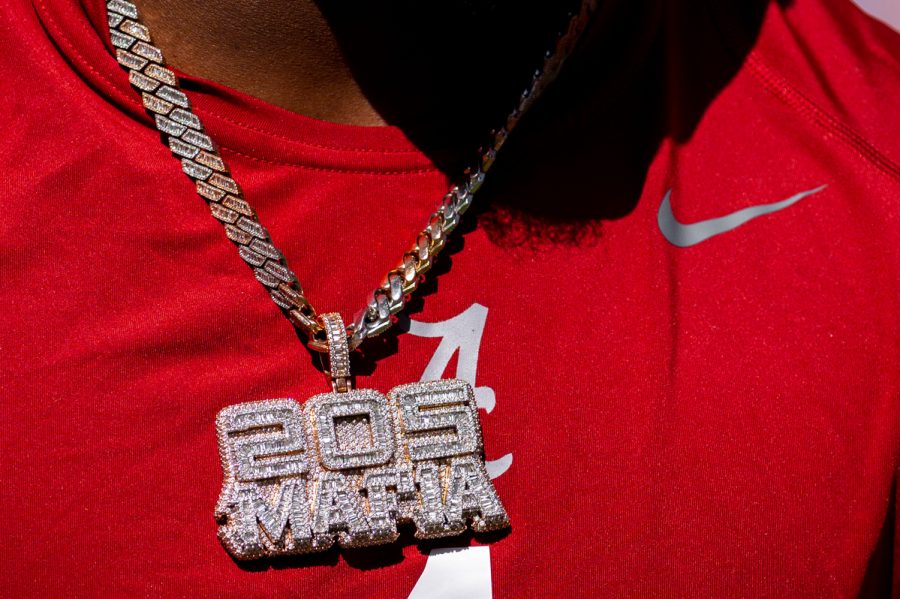

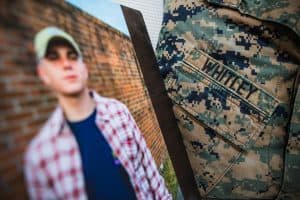
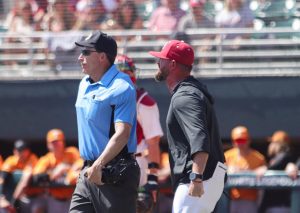
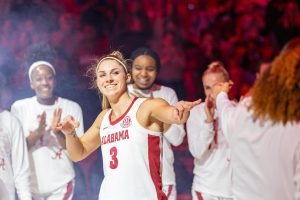
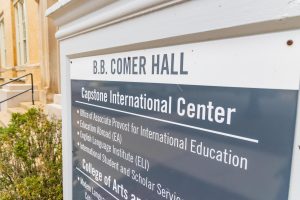









![UPDATE | New details have emerged about U.S. Immigration and Customs Enforcement’s arrest of doctoral student Alireza Doroudi.
— Yesterday, a University spokesperson confirmed that a doctoral student was arrested by federal immigration authorities, without providing the student’s name, declining to share specific information due to federal privacy laws.
“International students studying at the University are valued members of the campus community, and International Student and Scholar Services is available to assist international students who have questions,” said Alex House, associate director of media relations for the University. “UA has and will continue to follow all immigration laws and cooperate with federal authorities.”
— An employee at the Pickens County Jail confirmed that Doroudi is being held there, adding that the facility typically sends ICE detainees to a detention facility in Louisiana.
— The Department of Homeland Security provided a statement about Doroudi’s arrest:
“ICE HSI [Homeland Security Investigations] made this arrest in accordance with the State Department’s revocation of Doroudi’s student visa. This individual posed significant national security concerns,” a DHS spokesperson said. The statement did not provide details about why it claimed Doroudi posed national security concerns.
— Students for Justice in Palestine at UA, formerly known as Bama Students for Palestine, said in a statement on social media Thursday that it was “outraged” to learn of his detainment and that he "was not involved, nor has he ever been involved in any organizing or protests related to our organization."
This is a developing story and will continue to be updated. Read the updates at the link in our bio.](https://scontent-iad3-2.cdninstagram.com/v/t51.75761-15/486944895_18492822301025566_6944596333023050206_n.jpg?stp=dst-jpg_e35_tt6&_nc_cat=107&ccb=1-7&_nc_sid=18de74&_nc_ohc=hnp26Pzwsm0Q7kNvgH09W0S&_nc_oc=AdmIBEMuR_aRgaBd00Hlot3E59Vj_4lQyCImLLgp8CLdbxpSmLU25dhU_MO_Zul-qcU&_nc_zt=23&_nc_ht=scontent-iad3-2.cdninstagram.com&edm=AM6HXa8EAAAA&_nc_gid=JyXsE0oMUpGXSn2oOGXj0Q&oh=00_AYEFRQPRZWmKIpfSt_ecoQ5e5ypncgZOMVEXgC8gbz8fUw&oe=67F1F270)


